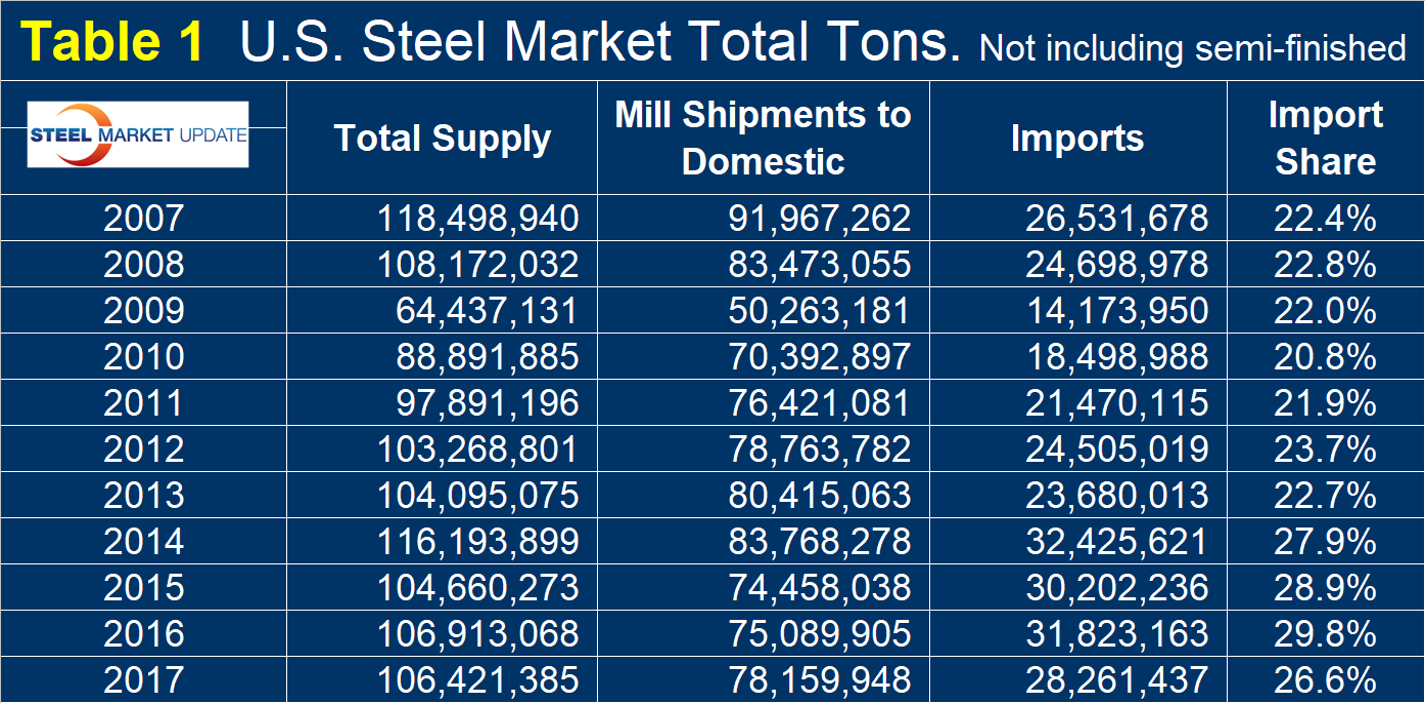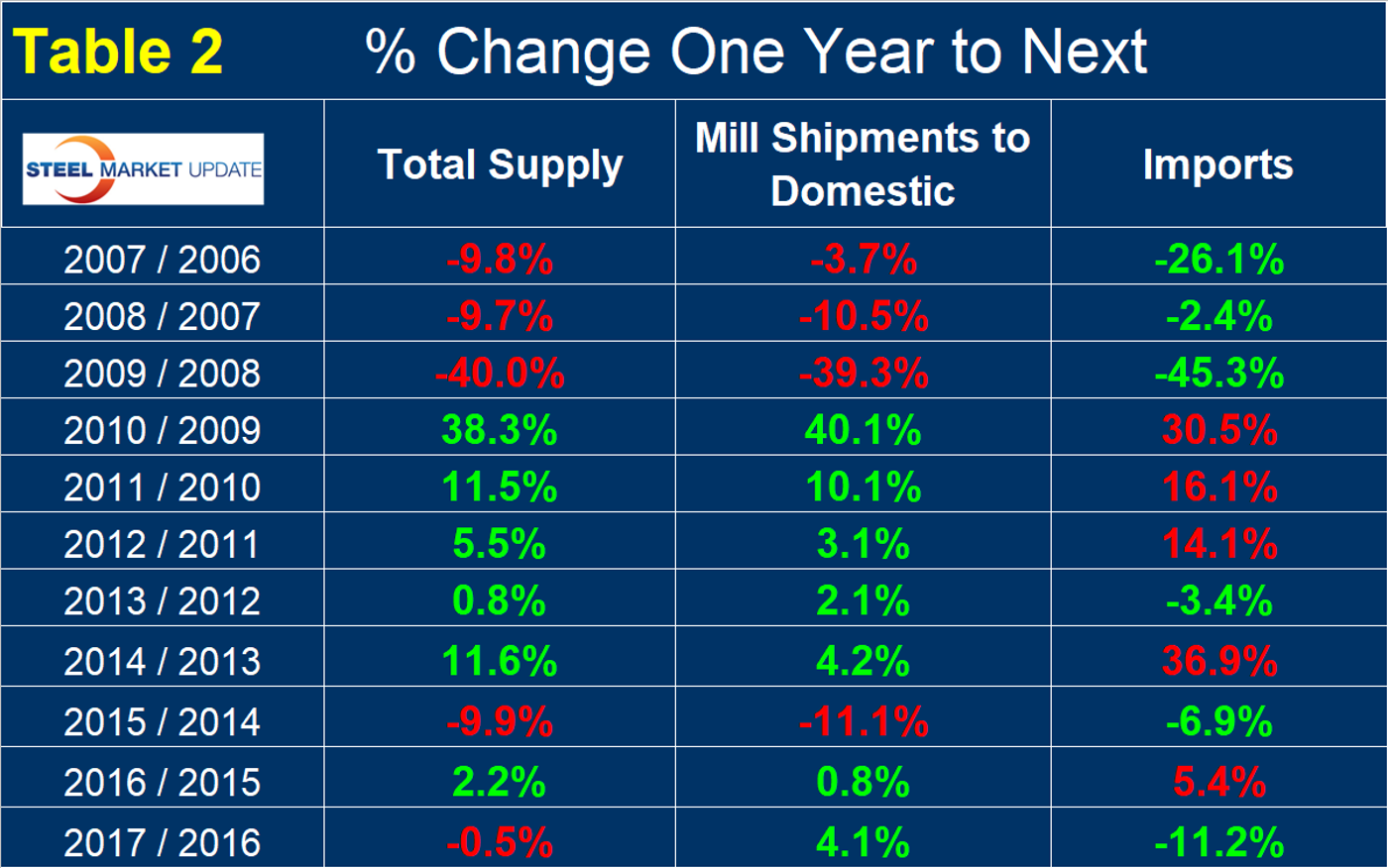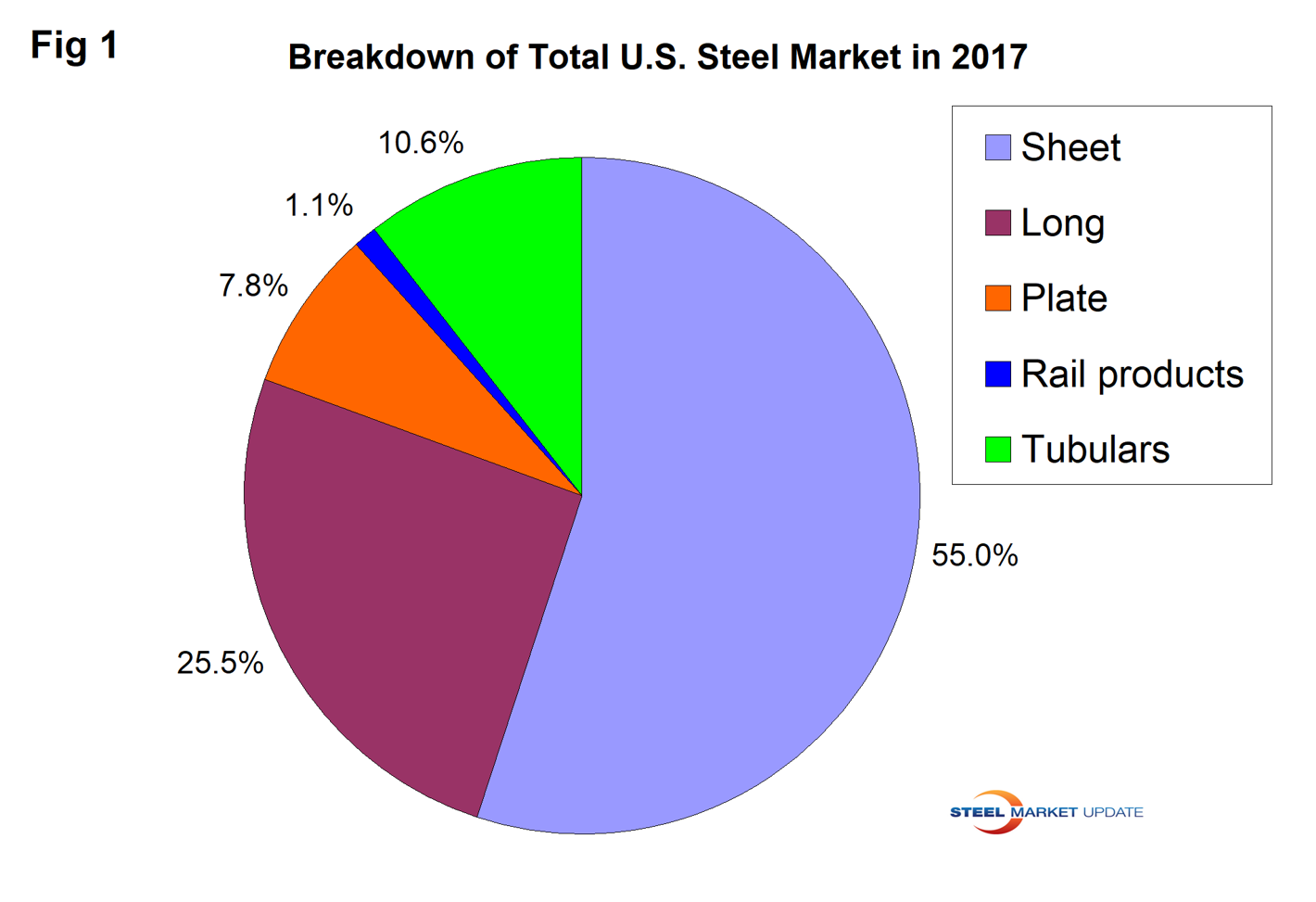SMU Data and Models

Domestic Mills Win Back Market Share from Imports in 2017
Written by Peter Wright
February 25, 2018
In 2017, the domestic steel market contracted by 0.5 percent, but domestic shipments were up while imports were down.
Table 1 shows 11 years of history of total steel supply to the U.S. market broken down into shipments from domestic mills and imports, excluding semi-finished. The hot rolled steel market totaled 106.4 million tons in 2017. Supply increased for five consecutive years 2010 through 2014, declined in 2015 and was relatively flat in 2016 and 2017. In 2017, imports excluding semis totaled 28.3 million tons.

Table 2 shows the year-over-year change annually since 2006. In 2017, the total market was down 0.5 percent, but the domestic mills took share from imports. Compared to 2016, mill shipments to domestic locations were up by 4.1 percent while imports were down by 11.2 percent. This trend was particularly driven by long products, less so for sheet.

Figure 1 shows the relative size of the major sectors identified by the American Iron and Steel Institute and the U.S. International Trade Commission.

The three-month moving average of rolled product imports declined for each of the five months August through December, a period in which the market was anticipating possible Section 232 restrictions on foreign steel.

Peter Wright
Read more from Peter WrightLatest in SMU Data and Models

SMU Survey: Buyers’ Sentiment rebounds from multi-year low
Both of SMU’s Steel Buyers’ Sentiment Indices edged higher this week. Current Sentiment rebounded from a near five-year low, while Future Sentiment rose to a two-month high

SMU flat-rolled market survey results now available
SMU’s latest steel buyers market survey results are now available on our website to all premium members.

SMU Survey: Sheet lead times pull back after early-June blip, plate holds
Following the uptick seen two weeks ago, lead times eased this week for all four sheet products tracked by SMU, while plate lead times held steady, according to this week’s market survey.

SMU Survey: Pricing power abruptly shifts to steel buyers
The majority of steel buyers responding to our latest market survey say domestic mills are more willing to talk price on sheet and plate products than they were earlier this month. Sheet negotiation rates rebounded across the board compared to early June, while our plate negotiation rate hit a full 100%.

Service centers: Mill orders down marginally in May
SMU’s Mill Order Index (MOI) declined for a third straight month in May, but only marginally.
